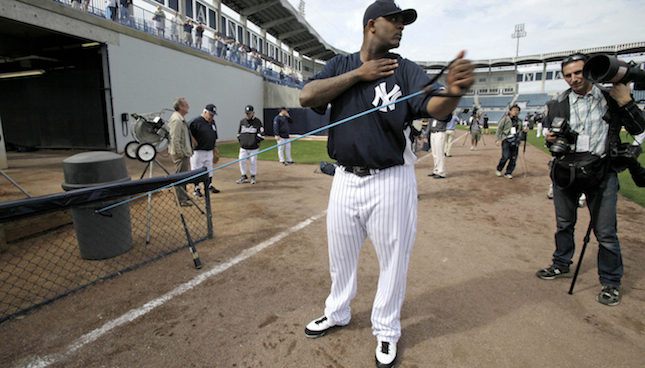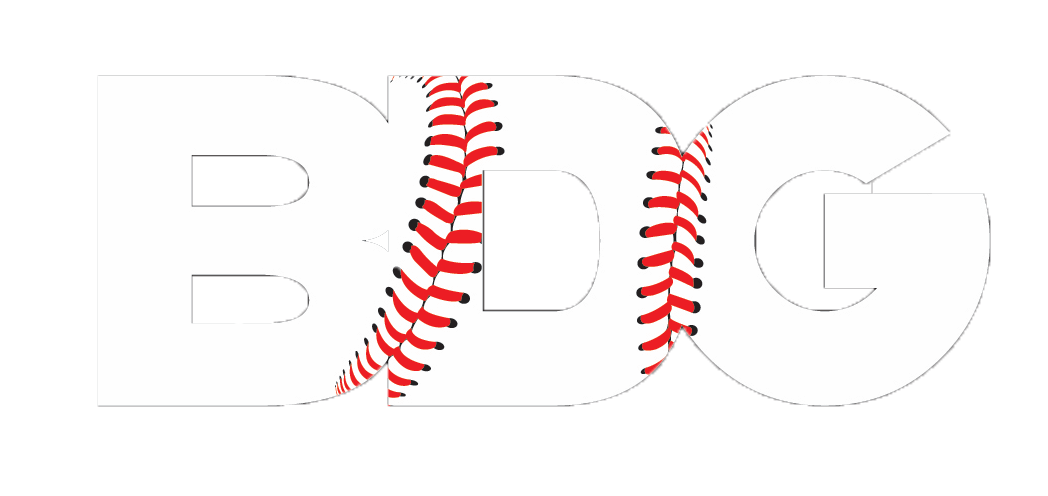Players, coaches, and parents are exposed to hundreds of new ideas each day. The explosion of information online is incredible for the eager learner, but should come with a word of caution – sometimes more isn’t always better. It can lead to confusion, tire spinning, and ultimately poor application and frustration.
A big issue is that people are often viewing all of these novel and interesting ideas as tools instead of principles. Rather than seeing something like foam rolling for it’s neurophysiological effects (what it actually does) they see it as a warm-up tool that must be incorporated — I mean everyone else is doing it, right?
But if what you’re trying to accomplish with one tool is already being taken care of by another, then why add it to the mix? What I am seeing is players constantly adding, adding, adding to their throwing programs, their warm-ups, their recovery days. More is not better.
The concept of minimum effective dose (MED) is lost or forgotten amongst these people.
If three workouts in the gym are equally as effective as five, then why add the extra two? BTW, without monitoring how you’re handling the training, how would you know anyways?
This concept comes into play in throwing programs, recovery and even when we are constructing a warm-up; the point of this post.
If the goal of a warm-up is to be fully prepared for the ensuing competition or training session, then wouldn’t we want to strive to do it while incurring as little fatigue or expending as little energy as possible? What about allocation of time in a program with time constraints (which one doesn’t?).
When it comes to building a warm-up routine, similar to when we build out training or throwing programs, everything in the session must have a rationale for its incorporation. You should be able to justify everything that it’s in your program. Good S&C coaches do this every day. Baseball coaches… not so much.
So when it’s time to put together a warm-up before a throwing session you should have an idea what you’re trying to accomplish. If you had to stand in front of a knowledge hungry intern, could you justify what you do?
Before you add something new to your warm-up (or recovery day, throwing program, lifting program) wouldn’t it be fair to critically scrutinize its inclusion? We believe it prudent to first answer — what am I trying to accomplish and what tools are best suited for the job?

Ryan Faer did a good job examining some common goals when building a warm-up in this article here. In fairness, this list isn’t written for an exercise science MSc and could include more depth, but for coaches and players this is a great starting point. If you’re starting from scratch, adding a piece to the warm up should check off one of these boxes.
- Gradually increase core body temperature and heart rate
- Increase blow flow to skeletal muscles
- Progressively take the joints through full and safe ranges-of-motion
- Prepare the muscles, joints, and central nervous system for ballistic movement
- Encourage the athlete to mentally prepare for competition
If we are going to be adding band work before a practice, game, or training session, what is the justification? Before I go and add 50+ reps of band work per day to a 13 year old kid, wouldn’t it be wise to ask why? Which of the aforementioned boxes does it check?
The most common answers I am usually presented with are:
It increases tissue temperature & blood flow. Yes it does. But so do push-ups or throwing a baseball. Does it improve tissue temperature significantly more than slow controlled articular rotations?
It ‘activates’ the muscles involved with throwing. I have a lot of issues with this claim and could write an entire post on it. First of all, what exactly do people mean by ‘activation’? If I ‘activated’ an individual muscle then performed another ‘activation’ movement right after, what happens to the first muscle? Does ‘activating’ a muscle in one position transfer to more ‘activation’ in a more complex and different position? (there’s no research to support this) How long does ‘activation’ even last? Do I need a band to ‘activate’ an individual motor unit? Can you accurately measure ‘activation’ on the field? Is throwing a baseball not an ‘activation’ exercise?
Progressively take the joints through full and safe ranges-of-motion. Not the way I see it performed. If a player cannot control full shoulder range of motion without any external resistance, then why add a band? Slow controlled rotation of joints, PROPER arm circles for example, accomplish this and are vastly underrated and poorly performed. ‘Waking up’ the cortical action and sensory maps via full ROM is likely not what people think of when they perform band work. If a player can achieve full ROM of control and you want to add resistance, can you add a band now? Yes. Can you just increase %MVC, eg internal resistance, of the motion and achieve the same goal? Yes.
Poor Application
On top of not fully understanding why I would need to include band work before throwing, I am skeptical that a lot of players aren’t doing more harm than good.
In my experience a lot of kids aren’t strong enough to handle hundreds of additional reps of shoulder work per week. Moreover, bands, just like anything else, are a stressor that need to be progressed appropriately. You wouldn’t just add 20 sprints per day out of nowhere and expect things to go well, so why is it different with bands?
How many times have you seen a youth or high school coach add band work in progressively?
I haven’t. That’s not to say that it doesn’t happen altogether, but I’d be surprised to hear that it’s a common occurrence. Is it possible that the added reps are fatiguing players rotator cuffs prior to throwing? I think this happens way more frequently than we think. If fatigue sets in before throwing, what does that mean for control and coordination? I think everyone can answer this.

Is it possible that doing hundreds of reps improperly, activating neck musculature, could be contributing to T.O.S cases? Mike Reinold and Eric Cressey both brought this up at a Pitch-a-Palooza and I think a reasonable case can be made for it. The way in which band work is performed, with excessive neck musculature involvement is the norm. Asking someone who already uses neck musculature as a primary source for breathing to add in hundreds of bands reps per week is recipe for disaster. (At least in our opinion).
Thus the following questions be asked:
Can I use bands safely to warm-up tissue temperate? Absolutely.
Do bands act as an ‘activation’ strategy? I am not sure.
Can I comprehensively warm-up the shoulder without incorporating bands? Absolutely.
Do I think that bands have a place in a warm-up? As always it depends on the player. And if you don’t know by now:
“If it depends on the context / scenario, then you better under the mechanisms and your justifications for using it.”
I’d love to start a conversation or discussion on this topic so feel free to present your thoughts or ideas below.
*Addendum
After this post came out I received a number of inquiries along the lines of “what do you do for a warmup instead?” or “you’re admitting that they’re effective though”. In light of these things, I thought it would be fair to address them briefly in a bit of an addendum.
Let’s say we walk into a high school program and their warmup consists of doing 20-30% MVC controlled articular rotations, dynamic movement prep, some jumps and single bound leaps, a few sprints, and then throwing plyo balls. After practice one day, a few players approach the coach and ask him if he could purchase bands for the team to include in warmup. The coach then asks his players “why do we need them?”.
I do not think that this is an unfair answer. In fact, I think it’s a reasonable practice to maintain when developing out a program. Why are we doing what we are doing? Is there redundancy in purpose? How can we elicit a minimum effective dosage?
Of course I am not saying that bands are inherently bad. Bands are simply application of load and I am not against loading of tissue. I wasn’t writing the article to deem them ineffective at checking off a few boxes — rather I just pointed out some misunderstanding of the word ‘activation’ — and you can use them if your application is well thought out and rationalized.
